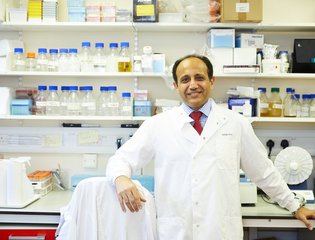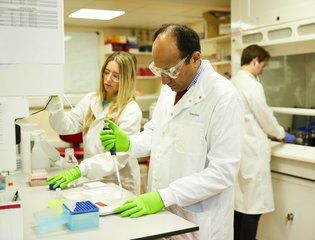Cervical screening is changing – but ovarian cancer still isn’t screened
What are the changes to cervical screening?
From July 2025, the cervical screening programme in England will be changing. Screening will take place every five years, instead of every three years.

Cervical screening will be changing in 2025
From July 2025, the cervical screening programme in England will be changing. Women and people with a cervix aged 25 to 64 will now be invited for routine cervical screening every five years – an increase from the current three-year interval for those under 50. This brings England in line with Scotland and Wales, where five-year screening intervals are already in place.
This change only applies to people who are at low risk – those who do not test positive for high-risk types of human papillomavirus (HPV). Anyone with HPV or signs of abnormal cells will continue to be screened more often.
Why is cervical screening changing?
Since cervical screening began in the 1960s, scientific understanding has moved on significantly. We now know that nearly all cervical cancers are caused by high-risk HPV. Thanks to the HPV vaccination programme introduced in 2008 for girls (and extended to boys in 2019), rates of cervical cancer are falling fast, especially among younger women.
The current screening test also changed in 2019 to something much more accurate. Instead of looking for cell changes first (known as cytology), the test now looks for HPV itself, and only checks for abnormal cells if HPV is present. This new method picks up more people at risk, earlier, and offers a more personalised approach to prevention.
Large-scale studies, including the ARTISTIC trial here in England, have shown that HPV primary screening is so effective that those who test negative for high-risk HPV are at extremely low risk of developing cervical cancer, even over a five-year period.
These are positive steps forward for cervical cancer prevention. But they also highlight the frustrating reality for people affected by ovarian cancer.
Why isn’t there a screening tool for ovarian cancer?
Ovarian cancer is the deadliest gynaecological cancer, largely because it is often diagnosed too late. The symptoms are vague and easy to miss or misdiagnose, and there is currently no screening tool that can detect it early.
Unlike cervical cancer, where we know the exact cell changes and where to look for them, ovarian cancer starts in a much more complex and poorly understood way, often in the Fallopian tubes. Without this critical information, we simply don’t yet have a reliable method of detecting it before it spreads.
But that’s something we are working to change.
The search for the world’s first ovarian cancer screening tool
Ovarian Cancer Action has been funding foundational research by Professor Ahmed Ahmed and his team to uncover how ovarian cancer really begins – and how we could one day screen for it. His research is focusing on the Fallopian tubes, where scientists now believe most ovarian cancers originate.
One of the team’s most exciting discoveries so far is that a protein called SOX2 appears far more often in the Fallopian tubes of people with, or at risk of, ovarian cancer. This opens up the possibility of using SOX2, and other markers like it, as early warning signals for ovarian cancer.
Professor Ahmed’s lab is using cutting-edge technologies, including organoids (mini Fallopian tubes grown in the lab), to map the earliest cellular changes that lead to cancer. By comparing hundreds of healthy and cancerous Fallopian tubes, they’re learning that DNA faults alone aren’t enough to cause ovarian cancer and uncovering the additional triggers that could help identify the disease before symptoms start.
Every discovery brings us closer to developing a test that could save thousands of lives through early detection. This is long-term, world-leading work and we won’t stop until we get there.
Read more about the cervical screening changes
To learn more about the upcoming changes to cervical screening and what they mean for you, visit The Eve Appeal’s website.


